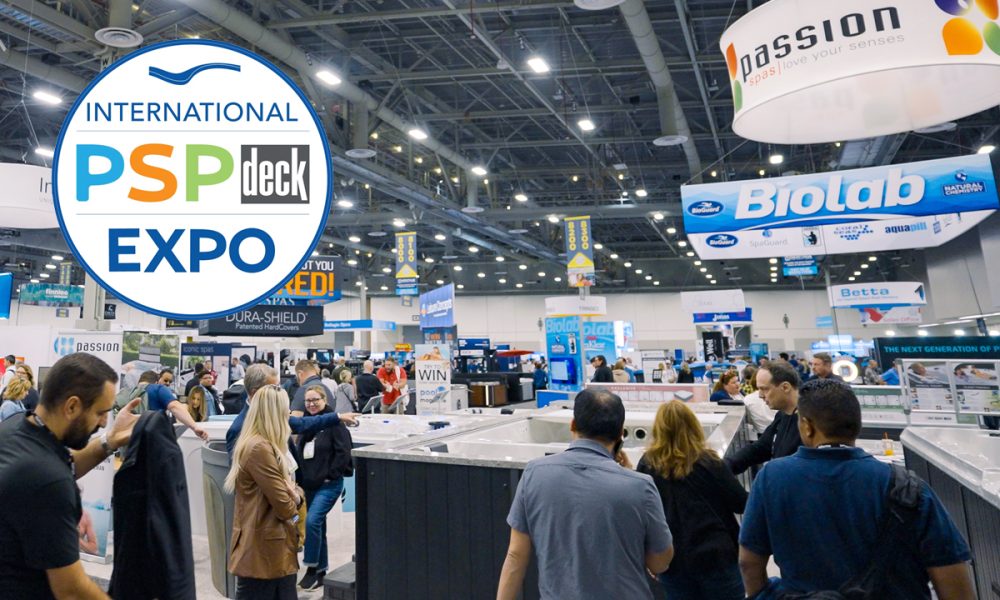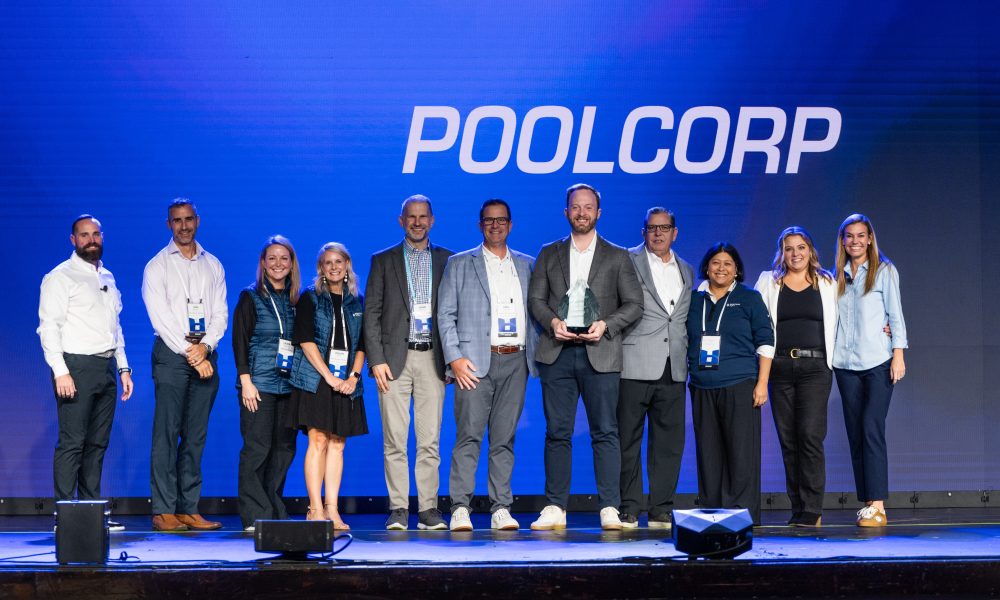If you know how to close concrete or vinyl-liner pools, you already have the fundamentals down. But fiberglass pools play by a different set of rules when it comes to winterization, and missing these differences can lead to warranty issues, surface damage, or spring headaches for your clients — and for you.
HOW CONCRETE/VINYL POOL CLOSING DIFFERS
Concrete and vinyl-liner pools often require water lowered below return lines, calcium levels maintained or increased, and cover systems that can tolerate a sag for weight distribution. These practices can damage fiberglass pools if applied without adjustment.
WATER LEVEL AND GROUNDWATER MANAGEMENT
- What to do: Lower water only to the bottom of the skimmer. Never below the skimmer. Never drain fully.
- Why it matters: Draining below the skimmer can expose the shell to hydrostatic pressure, leading to wall separation from the patio or inward bulging.
All inground pool types — concrete, vinyl, and fiberglass — can experience damage when hydrostatic pressure builds up due to groundwater levels exceeding the water level in the pool. What differs is how each pool type manages this risk. In fiberglass pools, a well point is typically installed during construction to monitor or manage groundwater. If you anticipate that groundwater could rise above the pool’s water level, particularly in wetter seasons, a temporary or permanent pump can be placed in the well point to relieve pressure and prevent damage. Though rare, taking this precaution in high water table regions can protect against bulging walls, settled plumbing, or other costly structural failures.
In my experience, the most catastrophic fiberglass pool issues during winterization always trace back to improper water level management. When the water is lowered below the skimmer, pressure on the inside of the pool walls is reduced — this can lead to bulging, which then causes plumbing to settle, leaks to form, and ultimately, full structural failure. Hydrostatic pressure becomes a serious risk, too. These are the kinds of failures that often cost $30,000 to $50,000 to repair. That’s why getting this right isn’t optional — it’s critical.
—Jason Hughes, Founder of River Pools of VA, PHTA Genesis Installation Course Instructor
WATER CHEMISTRY: PRESERVING A FIBERGLASS POOL’S FINISH
Many professionals are accustomed to shocking pools with Cal-Hypo during winterization, regardless of current chlorine levels, to “super chlorinate” before closing. While this is a common procedure for concrete pools, it adds unnecessary calcium to fiberglass pools, increasing the risk of scaling and staining on the gelcoat.
COMMON PROCEDURES VS. BEST PRACTICES FOR FIBERGLASS POOLS
- Common Procedures (Concrete Pools): Shock with Cal-Hypo before closing, add calcium to protect surfaces, and lower water to acceptable levels.
- Best Practices (Fiberglass Pools): If chlorine levels are already within the recommended 1 to 3 ppm, no additional chlorine is needed for winterization. Avoid Cal-Hypo products entirely. Maintain pH between 7.2 to 7.4, alkalinity 80 to 120 ppm, and calcium hardness below 120 ppm. Add a chelating agent (stain and scale control) before closing. Prioritize range adherence over targeting a specific LSI, which is secondary for fiberglass care.
WHY IT MATTERS
Concrete pools require added calcium to achieve water balance. When this is achieved, the calcium levels in the water match those of the portland cement used for structure and finish materials. This, in part, prevents damage to the finished surface.
Fiberglass pools do not require added calcium and can suffer surface damage in undesirable conditions. An excess presence of calcium, combined with high pH, and high chlorine, can lead to visible scaling and staining or surface damage, requiring extensive manual polishing or professional remediation.
Maintaining chemistry within range before winterization is sufficient for fiberglass pools; no “shock treatment” is necessary if levels are in range. This protects the gelcoat and reduces the risk of staining while avoiding unnecessary chemical costs for your clients.
THE UNDERRATED ROLE OF CHELATING AGENTS IN FIBERGLASS POOL CARE
One of the most overlooked tools in fiberglass pool maintenance is the use of chelating agents, commonly labeled as stain and scale control products. While most pool owners (and even some service pros) focus on chlorine, pH, and calcium hardness, they often skip this essential step.
Chelating agents bind to metals and minerals in the water, like calcium, iron, and copper, and keep them suspended in solution. This prevents those elements from interacting with the pool’s surface and forming visible stains or stubborn scale, especially during the colder months when water chemistry may fluctuate.
When calcium levels in a fiberglass pool get too high, the water will try to rid itself of the excess. The excess calcium often precipitates and adheres directly to the gelcoat surface. This leads to scaling, roughness, and visible residue. Chelating agents prevent this by isolating excess minerals in solution and making them easier to filter out or remove through backwashing. That’s why they aren’t just helpful, they’re essential, especially heading into winter.
COMMUNICATING WITH CLIENTS
Educate your clients on why fiberglass pools require different water level management and water chemistry than concrete or vinyl pools. Highlight that if water chemistry is within range, no additional chlorine is necessary for winterization, and using Cal-Hypo products can cause unnecessary issues. By sharing these details, you build trust, reduce misunderstandings, and ensure clients understand how your care protects their warranties and keeps their pool looking its best.
WHAT TO EXPECT BY FOLLOWING THESE RECOMMENDATIONS
When you apply these fiberglass-specific winterization steps, you can expect:
- Strong shell integrity with reduced risk of structural issues.
- A smoother, faster spring opening.
- Minimal to no scaling or staining on the gelcoat.
- Clients who appreciate your expertise and clarity.
WINTERIZING FIBERGLASS POOLS CHECKLIST
- Lower water no further than the bottom of the skimmer.
- Never fully drain the pool.
- Maintain pH 7.2 to 7.4, alkalinity 80 to 120 ppm.
- Keep calcium hardness below 120 ppm.
- Use liquid chlorine or nonchlorine shock (avoid Cal-Hypo) only if chlorine levels are low.
- Add chelating agent before closing.
- Check LSI but prioritize maintaining ranges first.
- Communicate fiberglass-specific needs with the client.
FINAL THOUGHTS
Winterizing fiberglass pools properly protects your client’s investment and your reputation. By understanding these differences, you’ll avoid spring headaches and preserve your client’s satisfaction.
This article first appeared in the September 2025 issue of AQUA Magazine — the top resource for retailers, builders and service pros in the pool and spa industry. Subscriptions to the print magazine are free to all industry professionals. Click here to subscribe.







